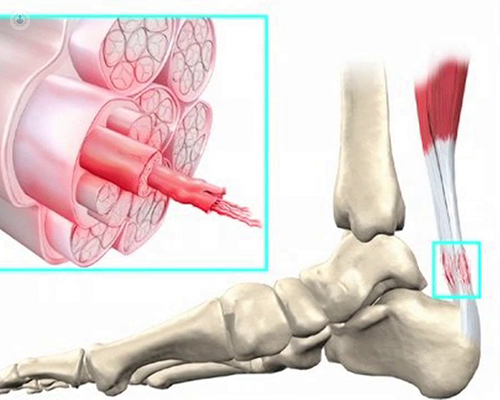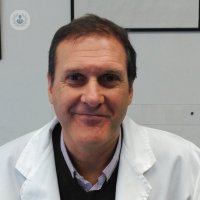Diathermy, rapid treatment of tendinitis and muscle tears
Written by:The Diathermy consists of introducing a cold energy in the tissues that interacts with the cells, generating an increase in the internal temperature that goes from the inside to the outside. Said energy is a high frequency electric current that moves between two electrodes placed on the skin of the patient.
With this system, the medical professional manages to optimize the concentration of energy at different levels of depth in the tissues (from the skin to the bone). Cell electrolyte exchange allows tissue balance. The thermal action decreases the sensation of pain and favors tissue regeneration , thanks to the increase in vascular supply. In this way, the recovery time is reduced thanks to the metabolic increase of the tissues caused by the increase in temperature.

Diathermy is a physical rehabilitative treatment that stimulates different damaged tissues (muscle, tendon, fat, skin ...), increasing its local temperature. With this, the vascularization and the repairing blood supply are increased. The patient only notes a slight heat in the treated area. This treatment does not require anesthesia or punctures and there is no irradiation, so it is suitable for all types of patients.
Unlike other physical rehabilitative methods (ultrasound, Tens, ...), diathermy manages to stimulate deeper tissues to reach the injured area. With sessions of 30 minutes of Diathermy during 4/6 days, it is possible to accelerate the recovery period of said musculoskeletal injuries.
What Diathermy is about
It is a manual technique performed by the physiotherapist and has various applications in traumatology. The most commons are:
Tendinitis (acute and chronic): shoulder, elbow, wrist, etc.
Sprains ligament-articular, bursitis, synovitis: ankle, knee, etc.
Muscular injuries (tears, scars, etc.): thigh, calf, etc.
Muscle contracture (cervicalgia, back pain, low back pain).
The difference with other musculotendinous rehabilitation techniques (ultrasound, Tens, laser, etc.) refers to the shortening of the recovery time and the possibility of combining the diathermy with manual treatments (massages, Cyriax, etc.).
In our Corridor and Cyclist Clinic we are getting good results in our patients (triathlon, cycling, soccer, ...), advancing in several days the reincorporation to their physical and sports activity.



